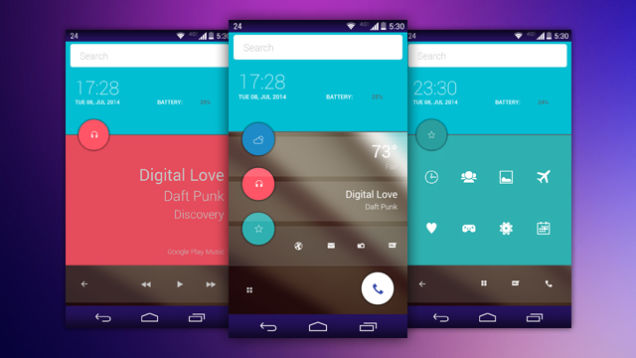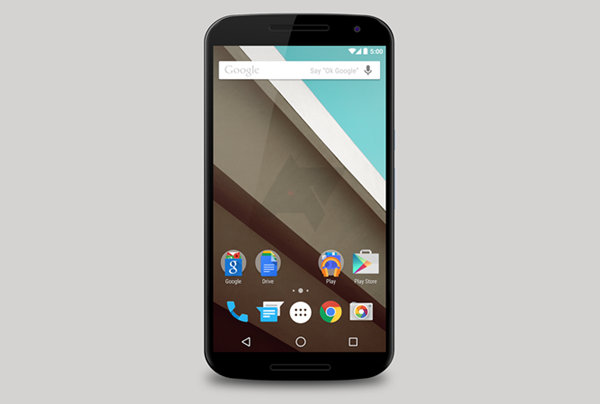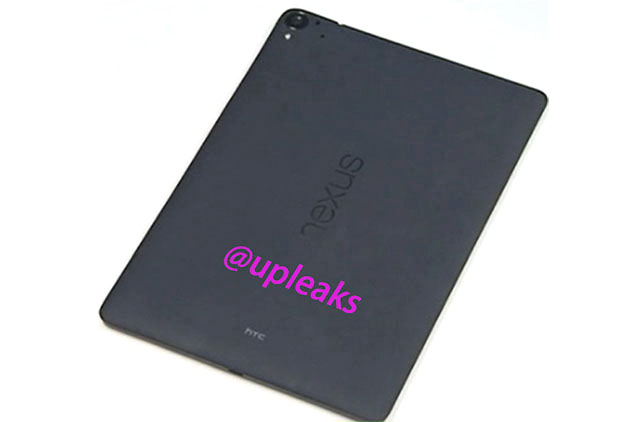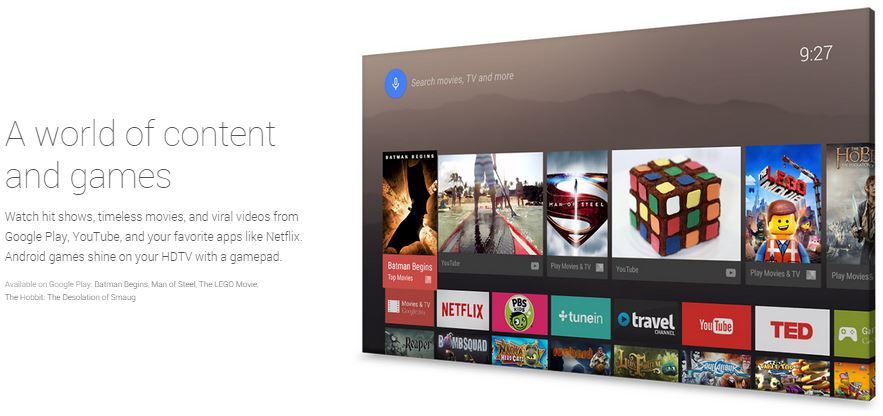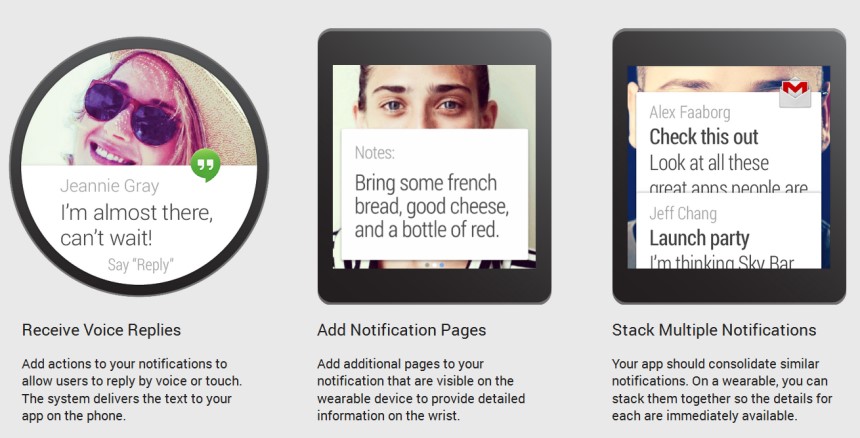What To Expect From Android L, Nexus 6, Nexus 9, Android TV and Wear 2.0
Google has quite a few products to launch this fall, from hardware like the Nexus 6 (also rumored to be called "Nexus X") and the Nexus 9 tablet to software platforms that include the next major version of Android, (called "L"), a new version of Android Wear, and an overhauled Google TV platform (now called "Android TV," which should also launch together with some hardware products).
Android L
Android L is obviously the most anticipated of these products. It's the next version of an operating system that already has over 1 billion active users (and growing). It's also a release that is getting a major redesign based on the new "Material Design" principles, which involve a flatter UI with shadows that define hierarchy and a multitude of colors being incorporated into the design of apps.
Last but not least, a big part of Material Design is about motion. Moving things around based on certain actions is what makes a Material Design app much more enjoyable to use than previous Holo-style apps. All or most first-party Android apps are also expected to get the Material Design treatment at or before launch.
Android L is not all about looks, though. This new version comes with a complete overhaul of the camera API that brings much higher performance, a higher degree of control over the camera hardware, and support for RAW(DNG) image files, which means that even if default camera apps won't be that great on some phones, third-party camera apps could take much higher-quality pictures.
Android L also brings the new Android Runtime (ART), which will compile apps at installation on the device, instead of being compiled in-use, which reduces performance somewhat. The new runtime along with "Project Volta" should give a significant boost in battery life to Android devices, as well.
Android L will also support ARMv8 chips, but unfortunately, there won't be too many devices taking advantage of that support this year. The Samsung Galaxy Note 4 uses an ARMv8 chip, but only in 32-bit mode, and the device won't be upgraded to Android L until next year, when it may enable 64-bit support.
Some of HTC's 64-bit devices will likely suffer the same fate. The Nexus 9 tablet may end up being the only Android device that will fully support 64-bit chips for now, but only if it will use the Denver-based Tegra K1, as rumored.
Get Tom's Hardware's best news and in-depth reviews, straight to your inbox.
Another interesting feature that has just been announced is that Android L will enable encryption by default for all local files. There may be a catch, though -- either L will require hardware acceleration for AES encryption, which only some high-end chips like Snapdragon 805 or all ARMv8 chips support, or the encryption could be slow on devices that don't support hardware acceleration for AES.
Nexus 6
The Nexus 6 has been quite controversial so far, mainly because of its rumored 5.9" screen, which represents a significant jump in size from the previous Nexus 5 smartphone. The device is supposed to come with a Qualcomm Snapdragon 805 processor with an Adreno 420 GPU, 3 GB of RAM, 1440p resolution, 32 GB of storage (no microSD support, as usual with Nexus devices), 13MP camera (that takes advantage of the overhauled Camera2 API), and a 3,200 mAh battery. The device will be made by Motorola and will, of course, run Android L.
Nexus 9
Google decided against releasing a large form factor tablet last year, with the Nexus 10 being the last large tablet from the company and its partner at the time, Samsung. This time, HTC will be the one to make it. The Nexus 9 should come with an 8.9" screen (looks like it will be a 4:3 ratio, just like the iPad), 2048 x 1440 resolution, only 16 GB of storage with a 32 GB option, 8MP rear camera with OIS, and 3MP front camera.
The tablet was initially rumored to have a 64-bit Denver CPU, but it's possible the device will only use the regular Cortex A15 Tegra K1 chip, if Nvidia's Denver isn't ready by the tablet's launch date.
There have been some leaks recently pointing to a "multi-window" mode in Android L, which could make the Nexus 9 (and possibly the Nexus 6) much more productive by allowing their owners to use two (or perhaps more) apps at the same time. You could, for example, watch a video or movie while chatting with a friend or browsing the web. It looks like the new multi-window system will also allow users to drag and drop elements from one app to another, potentially making it useful for work, too.
Samsung has tried multi-windows for some time. The problem with Samsung's system was that it mainly worked only with Samsung's apps, because Samsung had to write code that wasn't supported by other Android devices, and the performance was lacking, to boot. Hopefully, with the new native multi-windows system, users won't see a major performance impact anymore.
Android TV
Google has tried to make Google TV work for the past few years, but that project has failed for a variety of reasons. One would be that the set-top boxes based on Google TV were priced too high ($300). Another would be that the interface wasn't particularly easy to use -- some Google TVs even had full-blown keyboards to be used as remotes -- and third, Google never really gave gaming a chance on Google TV.
The first Android TV box, also said to be powered by a Denver CPU and Kepler GPU from Nvidia, could give more people an incentive to buy if it can do more than just stream Netflix and a few other services, which is something that the $35 Chromecast already does quite well. With the power of a Tegra K1 (which Nvidia claimed equals last-gen console performance and can now play Unreal 4 games) and a reasonable price tag, Android TV boxes could become compelling products.
Android Wear 2.0
There isn't much known about Android Wear 2.0 so far, and unless it was developed in parallel with Android Wear 1.0, there probably won't be major features added. However, Google has had some time to see how people use Wear smartwatches in the wild and receive some feedback from their owners. The company has also seen what Apple is doing with the Apple Watch, which should be Wear smartwatches' main competition.
With all of that in mind, Google may release an update that adds more APIs for developers to make more useful Wear apps and perhaps more support for health-related tracking. If Wear 2.0 is based on Android L, it could also get the new Android Runtime, which should improve both performance and battery life.
The release date for all of these devices should be October 15, a date that has been leaked several times already in the past few weeks. Google doesn't tend to hold major events in the fall, but with so many new products to launch at once, this may be one of the biggest autumn launches it has had in the last few years.
Follow us @tomshardware, on Facebook and on Google+.
Lucian Armasu is a Contributing Writer for Tom's Hardware US. He covers software news and the issues surrounding privacy and security.
-
LightningStryk17 ReplyAndroid L seems beyond awesome! IOS is already behind Android and this will make IOS look even more restrictive and childish. Android is a real operating system and not a glorified APP launcher like IOS.
These kind of comments are why I hate tomshardware any more, and why I hardly ever come back to this site. Such an elitist attitude.
-
lancelot123 Reply
Let me guess. You're waiting in line for the iPhone 7 right now aren't you?Android L seems beyond awesome! IOS is already behind Android and this will make IOS look even more restrictive and childish. Android is a real operating system and not a glorified APP launcher like IOS.
These kind of comments are why I hate tomshardware any more, and why I hardly ever come back to this site. Such an elitist attitude. -
burkhartmj Reply14337979 said:Android L seems beyond awesome! IOS is already behind Android and this will make IOS look even more restrictive and childish. Android is a real operating system and not a glorified APP launcher like IOS.
These kind of comments are why I hate tomshardware any more, and why I hardly ever come back to this site. Such an elitist attitude.
If you can't handle light fanboying then you are entirely too sensitive and must hate all tech sites with a comments section. He didn't even insult users, he merely stated his opinion, an opinion you'll see echoed by many others on similar articles at engadget, gizmodo, ars technica, etc all across the internet.
As for the article, I am beyond excited by all of this except for the Nexus 9. It seems to have a curiously low resolution, same as some phones and noticeably less than the aged Nexus 10. Of course it's around the same res as the 12 inch Surface Pro 3, and everyone seems okay with it there, so it'll probably be more than acceptable. I hope Cyanogen moves quickly and gets L on the OnePlus One so I can enjoy it soon. I'm just starting to get used to a 5.5 inch phone, but I look forward to messing around with a Nexus 6. I've been waiting for awhile to pull the trigger on an Android Wear watch , hopefully they make some meaningful improvements so it's a little less swipey and a little more intuitive. -
Mac266 I am more excited (I don't get to use that word often) about Project Ara. Really looking forward to that.Reply -
ohim Am i the only one that thinks Android L is ugly as hell ? What`s with this Windows 3.11 era design trend.Reply -
Miharu @ohim, I think this could confuse people and I see your point. The first image is kind a blue and empty. It's not really what I except when I want to hear about Android L. Android L give many good change but you must know them before read this article. It's just a bad image, like there are similar image for show iOS settings. Like they won't sell me the OS with that image. I recommend to go read about new features in Android L... it's good change who is not written here because the article is about HTC Nexus. I do like that they do with the Nexus but I hoped a new 5 po Nexus with "Tango Project" camera. Perhaps I'll have to wait one more year to see that happens.Reply -
chriz78 I have to agree with ohim. First Windows 8, then iOS 7, now Android L, with these ugly colors and flat UI. At least the shadows might look nice.Reply
I hope the rumors are wrong and the Nexus 6 doesn't have a 5.9" screen; I would have preferred another 5 inch screen. I suppose I will have to look for a different phone then. -
stevejnb Reply14337759 said:Android L seems beyond awesome! IOS is already behind Android and this will make IOS look even more restrictive and childish. Android is a real operating system and not a glorified APP launcher like IOS.
The irony here is some phone fanboy bragging about a rinky-dink app based phone OS - any phone OS - being a "real operating system." Go figure, they are all glorified app launchers. You're like a man with a sick goat claiming that your goat produces more milk than another guy's anemic sheep.
You want to brag about a "real operating system'"? Stop talking about phones. It's laughable. -
captaincharisma "You want to brag about a "real operating system'"? Stop talking about phones. It's laughable."Reply
so you're saying Linux is not a "real" OS? i am just asking since the majority of phone OS'es are built around. -
stevejnb Reply14343165 said:"You want to brag about a "real operating system'"? Stop talking about phones. It's laughable."
so you're saying Linux is not a "real" OS? i am just asking since the majority of phone OS'es are built around.
Oh please... By that reasoning, the XBOX One has a "real" operating system since it is built around a Windows kernel. I suppose you consider it to have more of a "real" OS on par with full Windows, major Linux distros, and OSX, as far as functionality goes? The line of reasoning you seem to be putting forward is "the software is based on an X kernel, with X being a full blown OS, therefore the software is a full blown OS." This reasoning is patently ridiculous, as it's clear neither the XBOX One OS nor Android have nearly the functionality of the traditional "full blown" OS's, but said reasoning would put them all on the same level.
On a scale of overall functionality, let's say that IOS is a 2 or a 3. Android would be, comparatively, between a 3 and a 4. Windows/OSX/major Linux distros would likely be somewhere between 8's and 10's. Debate the numbers, but when you're talking about "fully functional OS's," Android and iOS are *both* several leagues behind proper OS's, which is precisely what I was getting at. "My crippled glorified app launcher is better than your crippled glorified app launcher - it's a REAL operating system!" No it's not... It's just a slightly less crippled glorified app launcher and it can hobble along beside iOS, Windows phone, firefox OX, and whatever Blackberry is doing, in envy of what a real OS can do. I just find it ridiculous to see some phone fanboy trying to contrast one crippled phone OS against another as a "real OS"...
"Built around a kernel" does not equal "the same level of functionality as the OS of the kernel." To pretend otherwise is just disingenuous.
